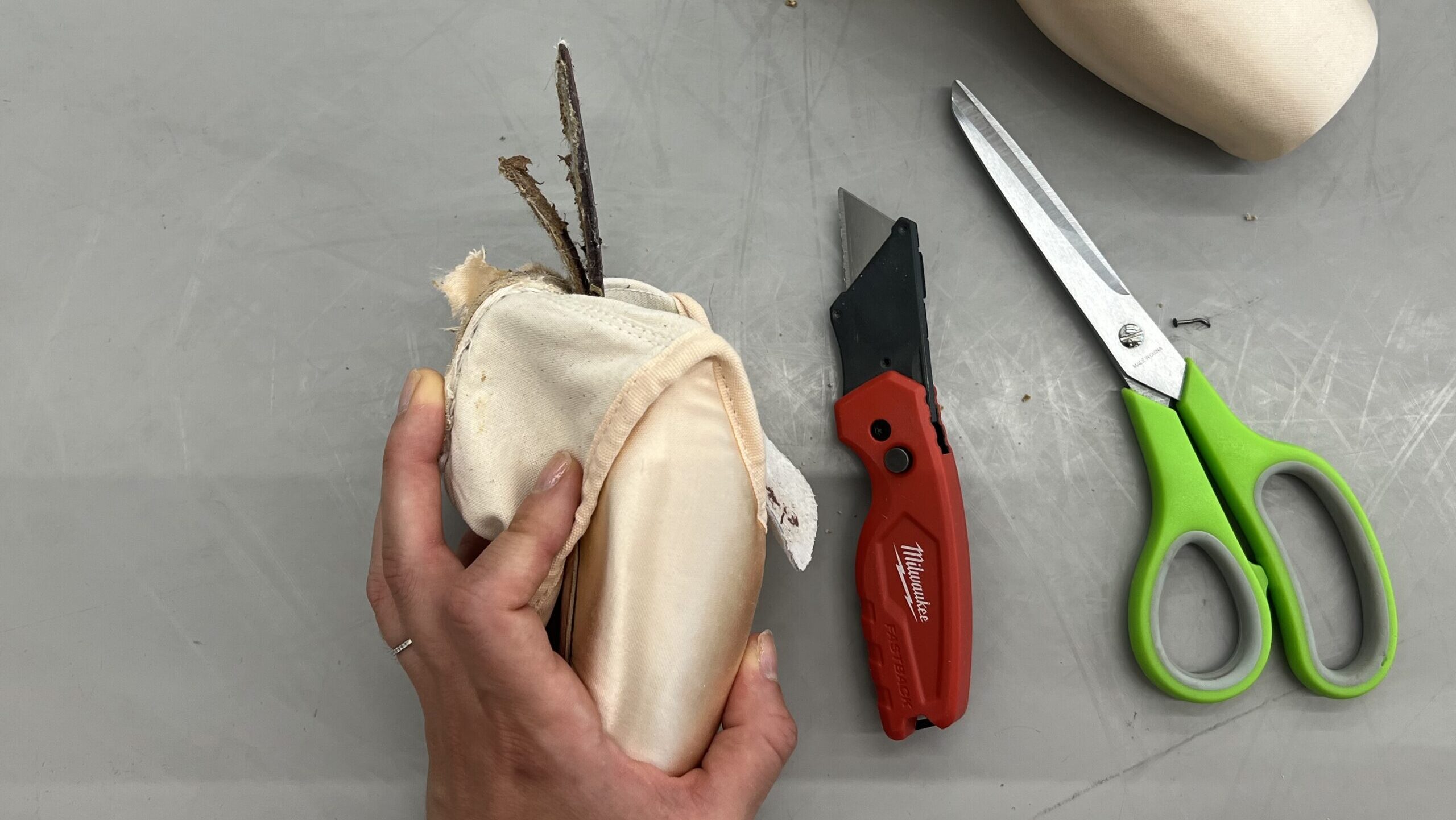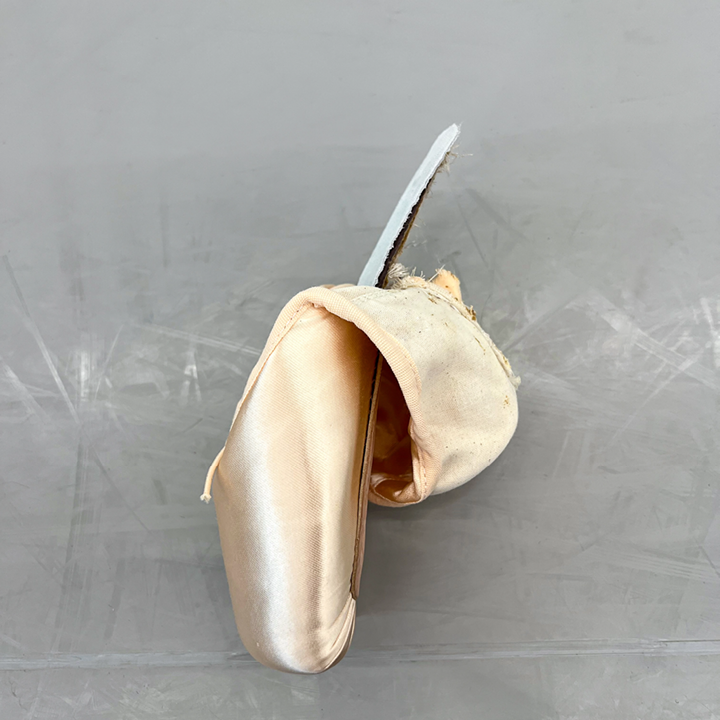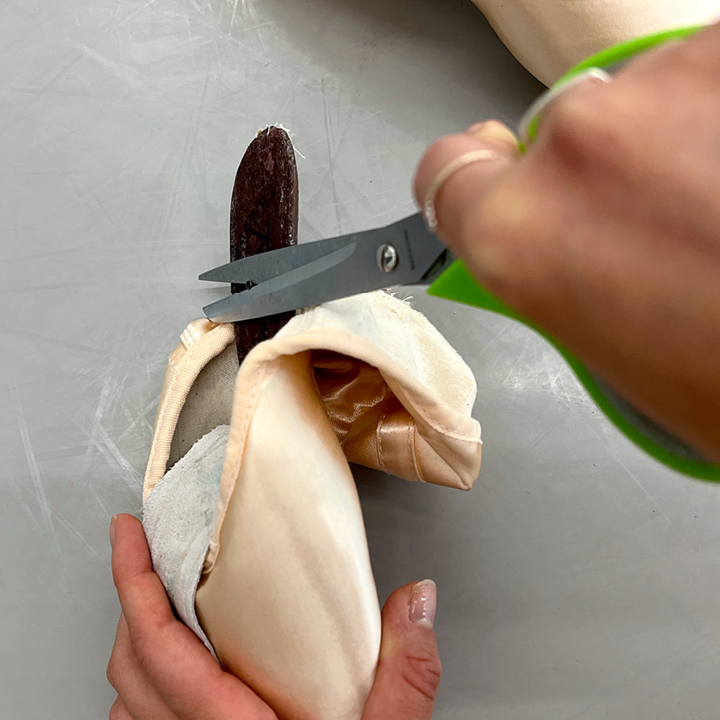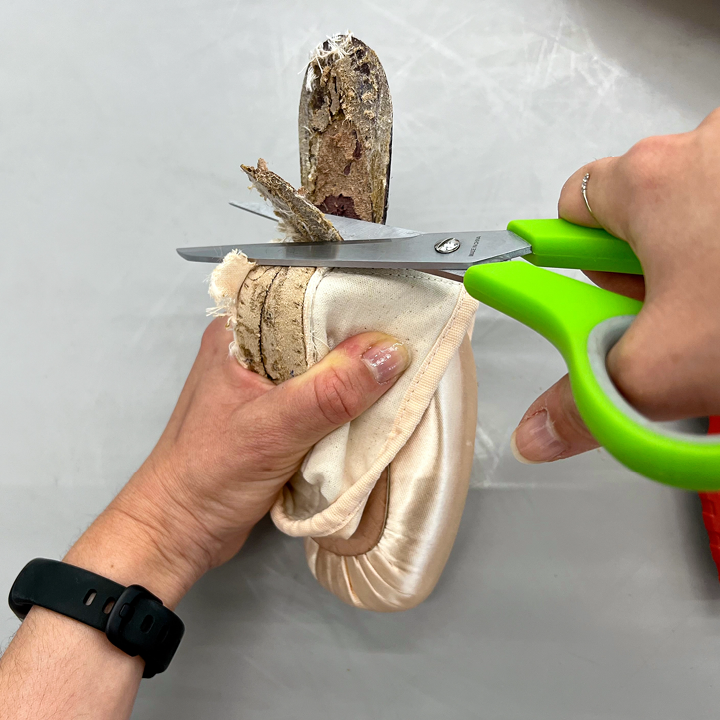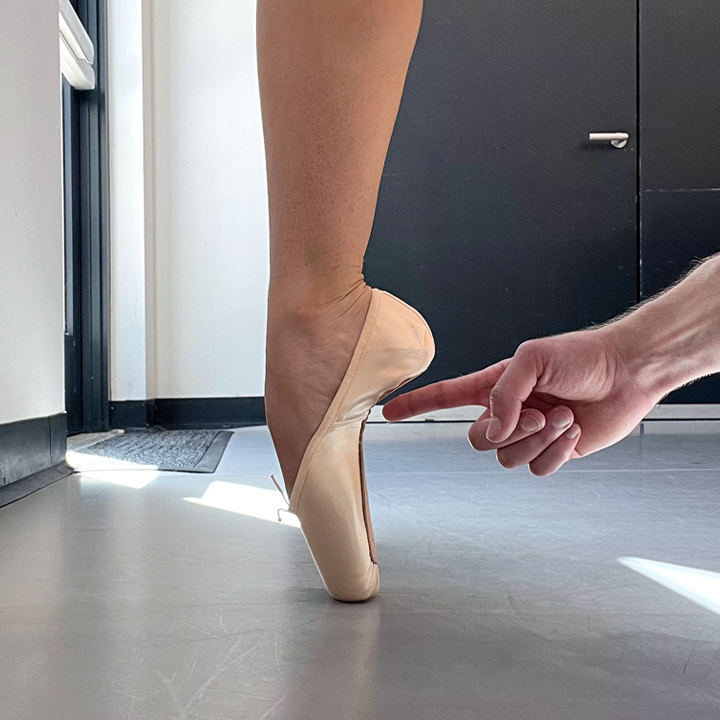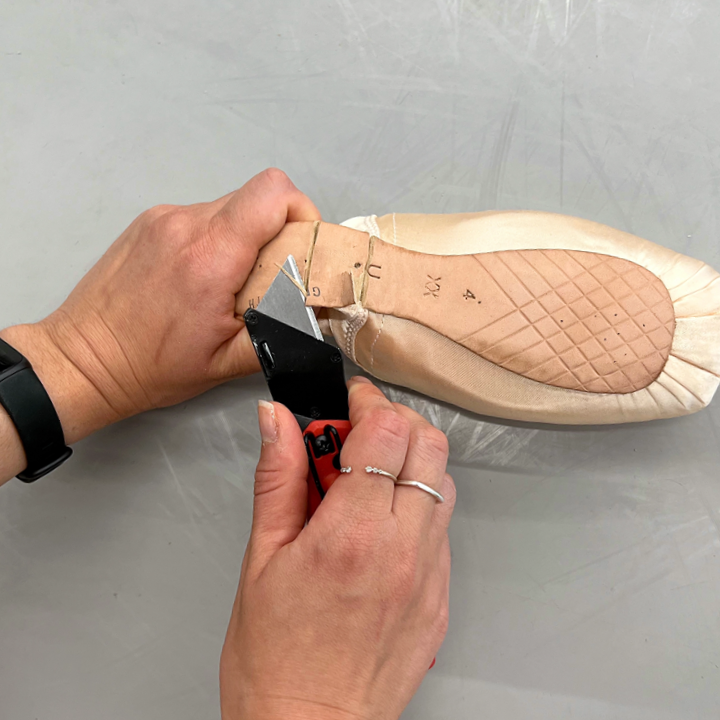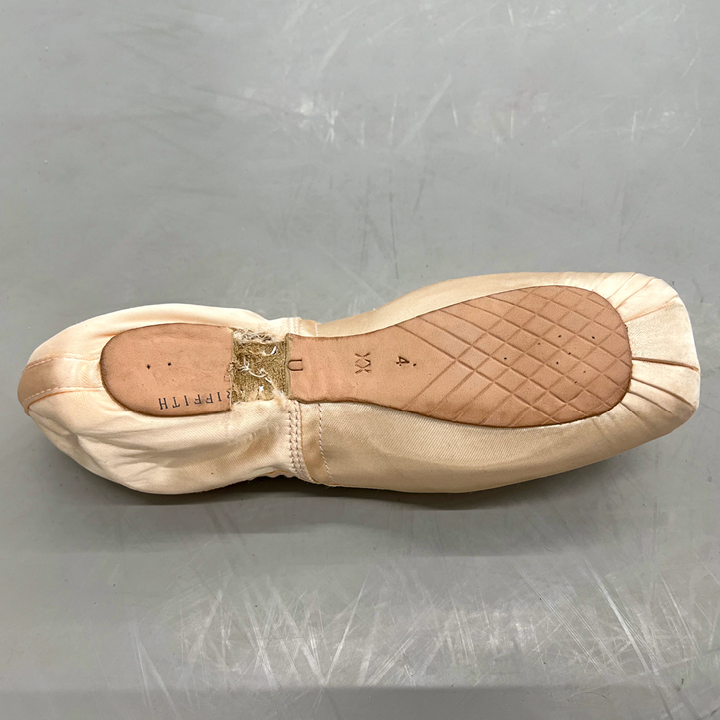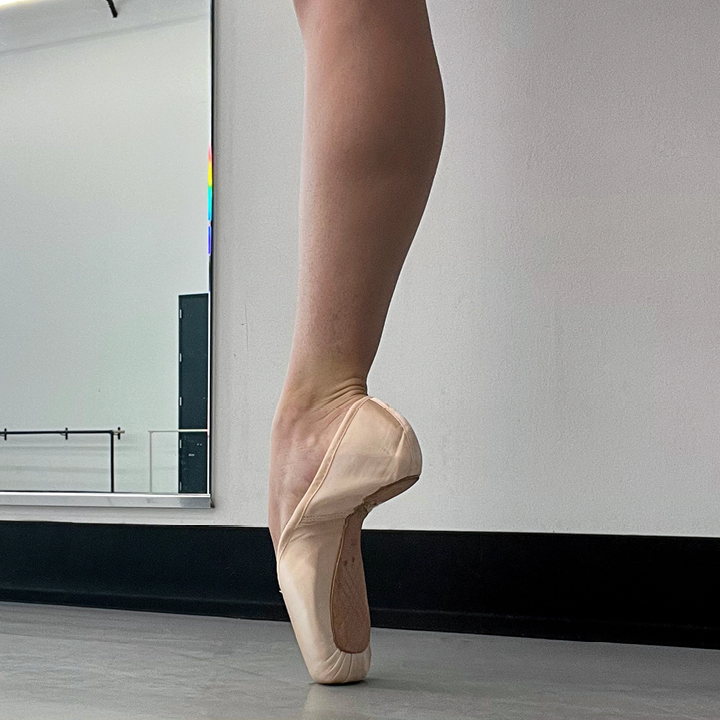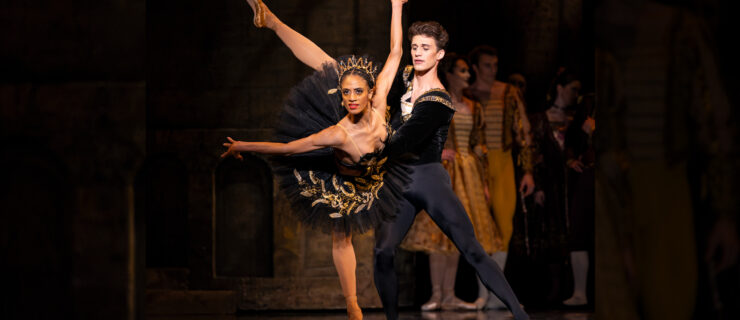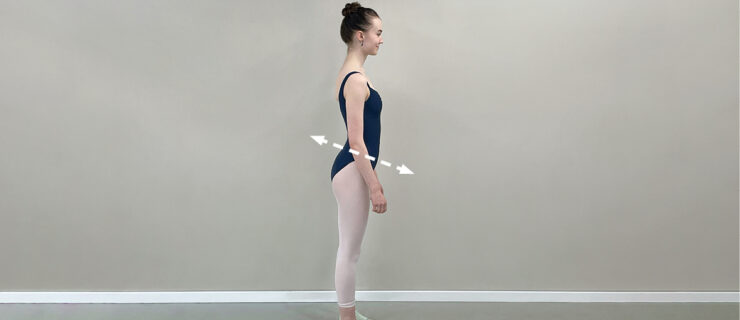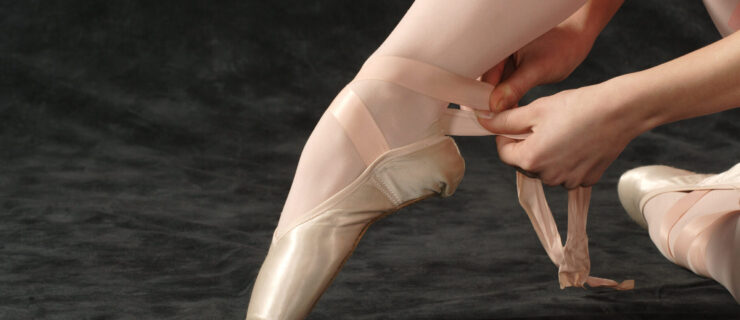How to Three-Quarter-Shank Pointe Shoes
Have you noticed the option to purchase three-quarter-shanked pointe shoes from your shoe supplier or seen a friend removing part of the shank from her shoes? Many dancers prefer the feel of a three-quarter shank; it can improve the look of your foot on pointe and provide added support and flexibility to your shoes, as well.
Perhaps you’ve wondered if three-quarter-shanking might benefit you but don’t know how to begin. Below, we break down everything you need to know to determine if it’s right for you.
Shank Anatomy
The shank is a stiff layer that runs lengthwise under the insole of your pointe shoe; it may resemble a large popsicle stick or tongue depressor. It helps support your arch when you stand on pointe. Shanks are typically made from layers of hardened cardboard, but they can also be made from leather and, more recently, plastic. Three-quartering removes the area of the shank and insole that runs from the edge of the heel to where it meets your arch.
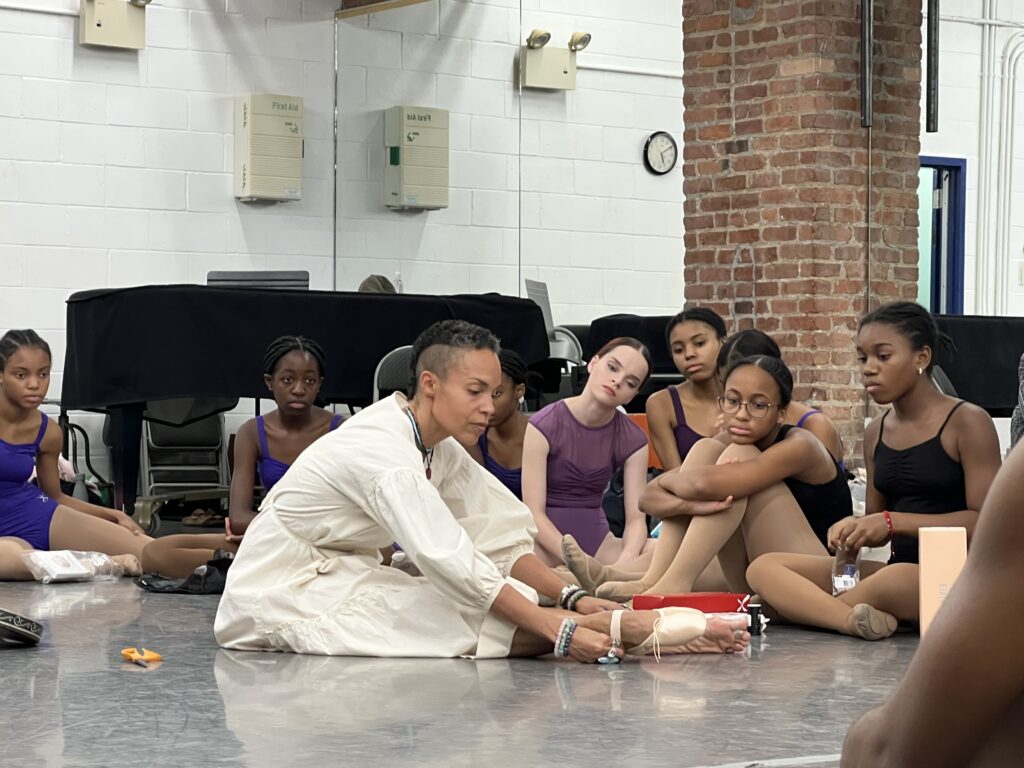
Some shoe models already come three-quarter-shanked, and in some cases you can special order them from the manufacturer. But many dancers are very specific about where they want the shank cut and prefer to do it themselves.
Why Change the Shank?
Modifying the shank of your shoe can be particularly helpful if you have lower arches and struggle to break in or get over the box of fully shanked shoes. Tai Jimenez, the director of Dance Theatre of Harlem School, recommends three-quartering to her students who wrestle with these issues. “Ballet is a visual art—you don’t want to see someone on pointe who is not all the way over their shoes,” she says.“You want your pointe shoe to look like a natural part of your body.” Jimenez adds that three-quarter shanks can help students pull up and lengthen their instep, rather than sinking into the box and knuckling.
Dancers with well-arched feet may find that full shanks break in the wrong place; three-quartering them can give better support, redistribute pressure, and help give shoes greater longevity as a result.
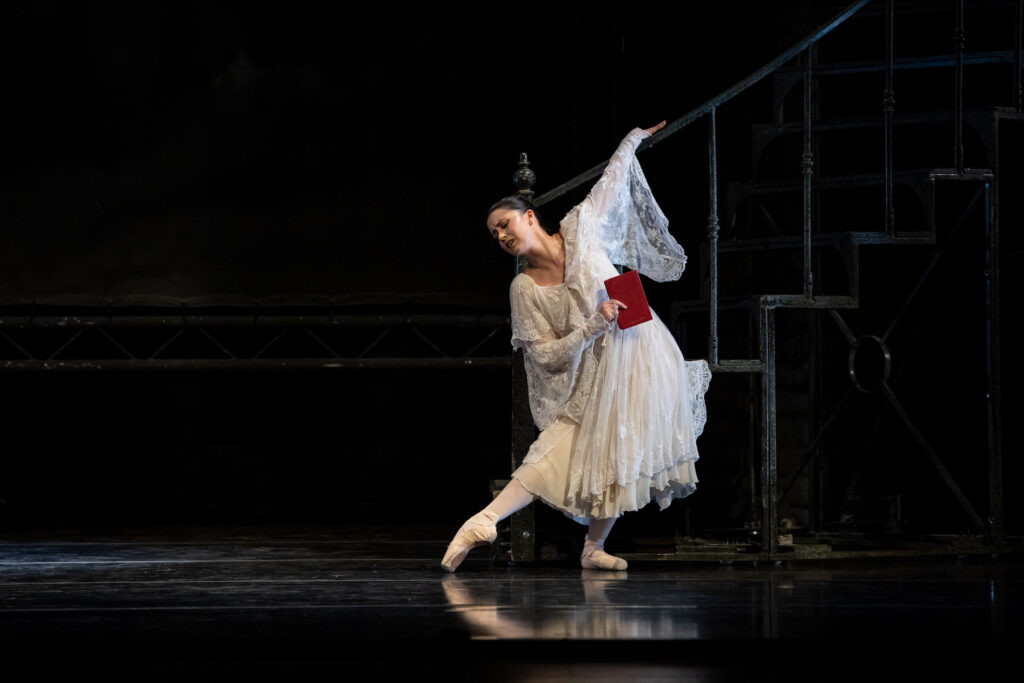
“I found that I was breaking my shoes really quickly,” says Milwaukee Ballet leading artist Alana Griffith, who adds that they would sometimes break too low. “I would start to sink into the shoe, and they would only last a week.” A colleague suggested she try three-quarter shanking. “At first it was a lot of trial and error,” Griffith says. But, eventually, she figured it out. “It helped my shoes last longer, and I really liked the shape it gave my foot.”
How to Three-Quarter Your Shanks
To safely three-quarter-shank your pointe shoes, you will need a strong cutting tool, such as craft scissors, a box cutter, or a razor-knife. Some dancers use a file to soften and round any edges after cutting the shank, and some recommend using gardening or dishwashing gloves to protect their hands.
If you are relatively new to pointe, check with a trusted teacher before altering your shoes. If you are attempting it for the first time, always have someone help you and make sure to practice caution. Keep in mind that not all pointe shoe models can be three-quarter-shanked. If your shoe is made from synthetic materials like plastic, three-quartering may damage them.
How-To Basics:
- First, peel back the lining of your shoe about halfway so the insole is visible. Draw a line where you plan to cut your shank—it should support your entire arch but stop where your heel area begins.
- If there is a nail in the heel, you will need to remove it with scissors or needle-nose pliers to expose the shank.
- Carefully use your cutting tool along the line. Take it slowly, as detaching the shank usually takes a little time. Cut away from yourself, not towards. Griffith says: “I think of it like I’m cutting a piece of meat: little sawing movements rather than a big cut.”
- Once you have detached the piece of shank, try the shoe on to make sure the shank edges don’t dig into your foot. If it feels uncomfortable, consider cutting it a little lower so it clears your heel. You can round the edges or use duct tape along them. Jimenez says: “I would actually cut out a little piece of fabric and sew it over the place where I had cut my shoes,” to eliminate any irritation.
- Replace the shoe lining to provide cushioning. You should feel an improved bend to your arch, without sinking into the box on pointe.
Griffith, who wears a reinforced shank, actually has a slightly different method for three-quartering—she cuts the specialized reinforcement, leaving the insole on top intact, then cuts out the corresponding portion of the outer sole (see photos below).
Advice for Dancers
It’s typically not advised for dancers who are new to pointe to three-quarter their shoes. “You have to know your foot to know where you want to cut the shank,” says Griffith. “It’s definitely something to try towards the end of your training years.” Once you understand how your shoe fits and what type of support you need, and you have built adequate strength in your foot and ankle muscles, you can begin to experiment with your shank.
“My advice is: Don’t be afraid,” says Jimenez. “It’s going to require some trial and error—that’s the only way you’re going to learn.” Practice first on old shoes to figure out what works best for your foot and where to make your cut. “We’re all striving to have beautiful feet, but it also is about supporting your foot and being safe,” Griffith says.
“The goal is to make it look like the shoe is an extension of your foot and organic, like it was meant to be that way,” says Jimenez. “Most people aren’t going to be able to wear shoes straight out of the box. Understand that. Be willing to put the work in.”
